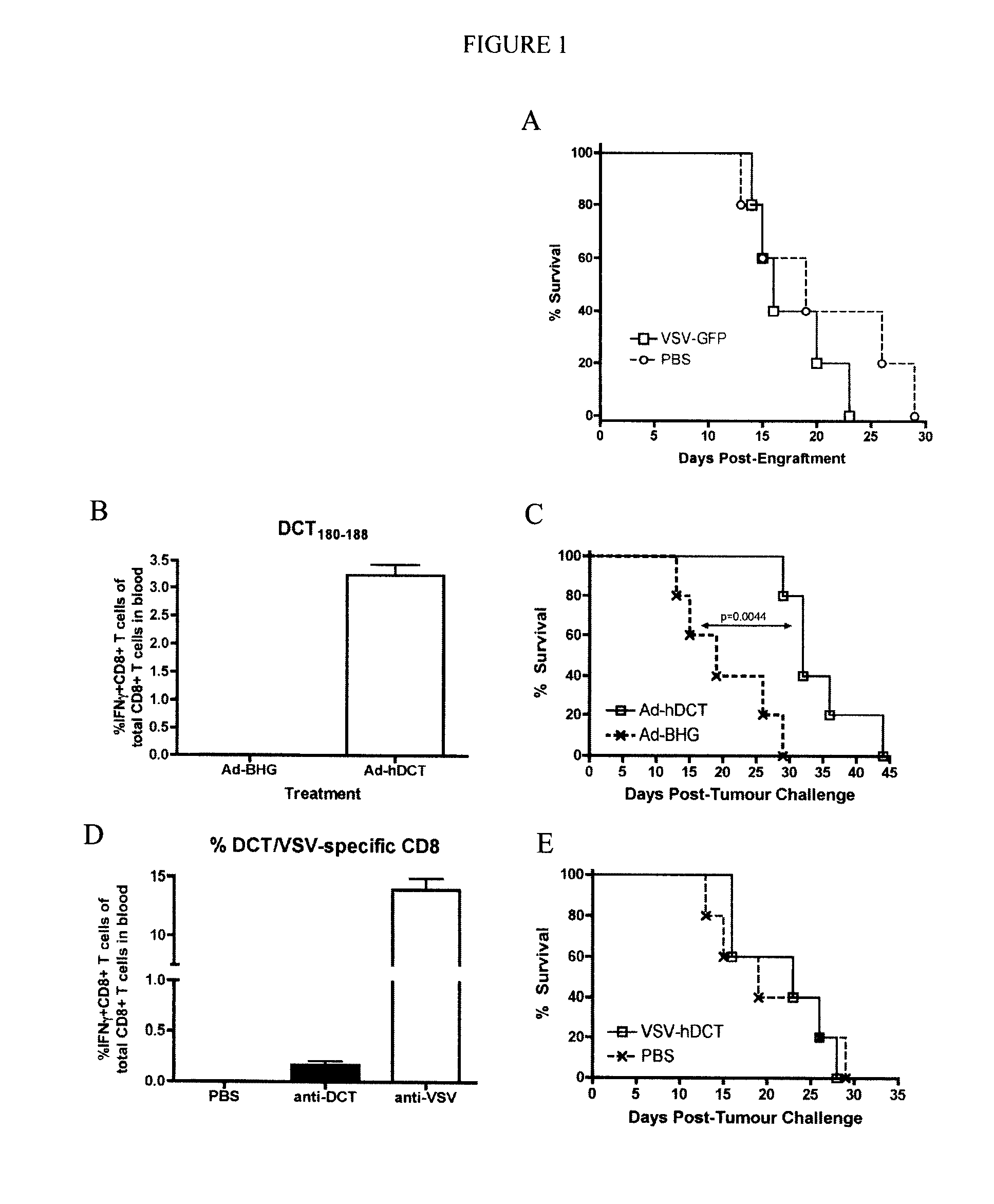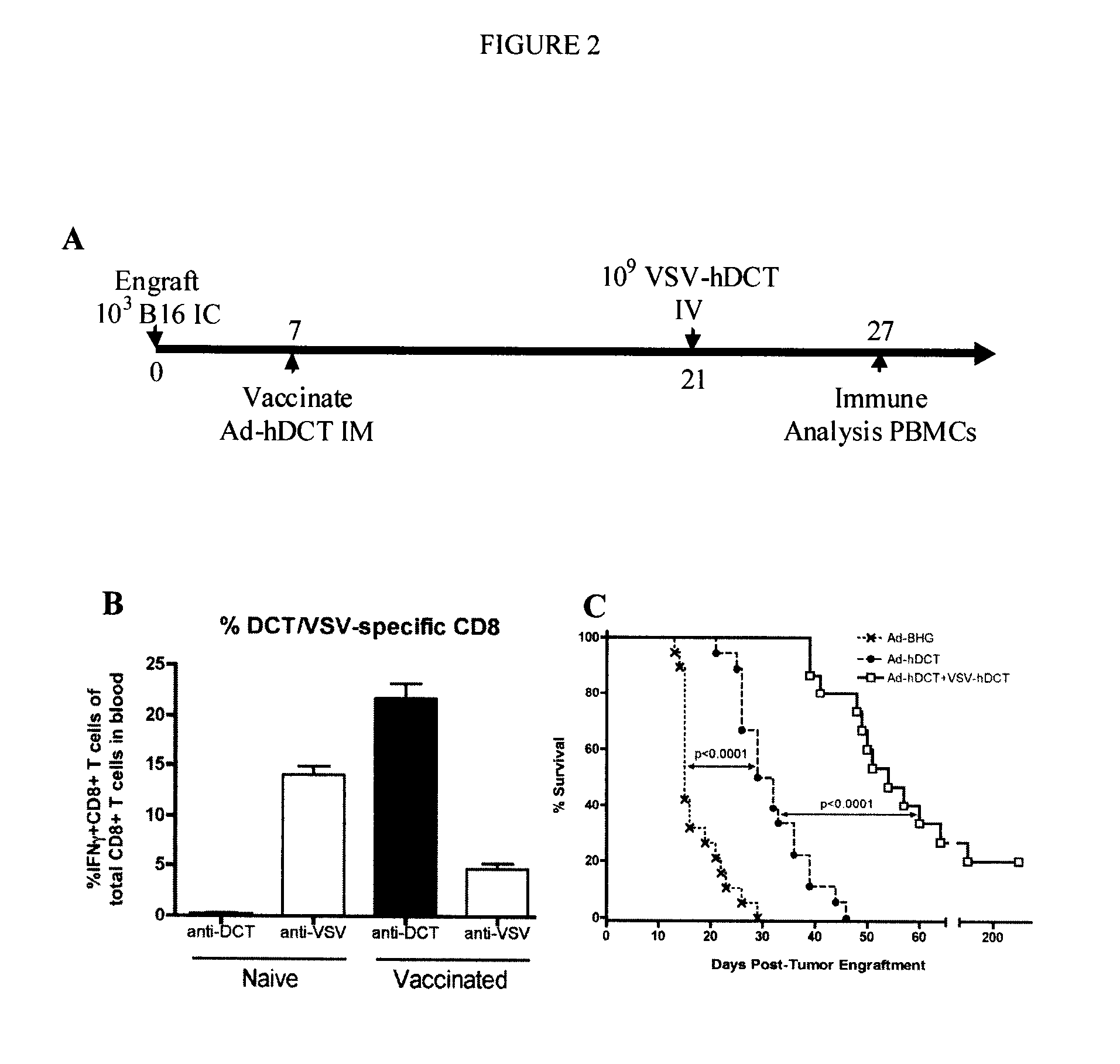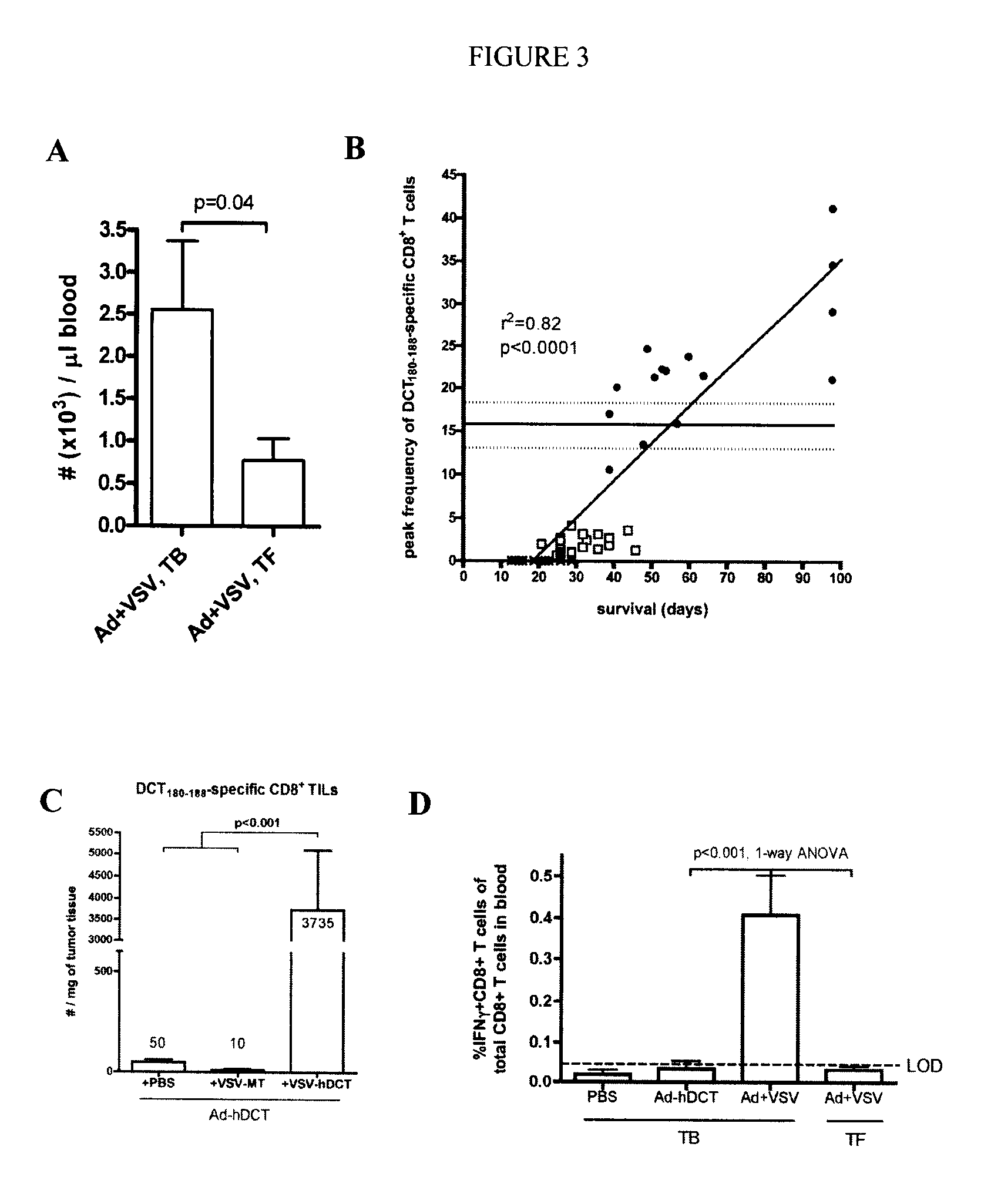Vaccination methods
a technology of vaccinating methods and mammals, applied in the field of vaccinating methods of mammals, can solve the problems of complex induction of cellular immunity, inability to control certain pathogens by current vaccination approaches, and substantial problems for vaccinologists, and achieve the effect of boosting immune respons
- Summary
- Abstract
- Description
- Claims
- Application Information
AI Technical Summary
Problems solved by technology
Method used
Image
Examples
example 1
Materials and Methods
[0059]Mice. Female age-matched mice (8-10 weeks old at study initiation), including C57BL / 6 (H-2b) and BalB / c (H-2d) mice (Charles River Laboratories, Wilmington, Mass.), were housed in a specific pathogen-free facility. Animal studies complied with Canadian Council on Animal Care guidelines and were approved by McMaster University's Animal Research Ethics Board.
[0060]Cells. B16-F10 murine melanoma cells and CT26 colon carcinoma cells were grown in F11-minimum essential medium containing 10% FBS, 2 mM L-glutamine, 1 mM sodium pyruvate, vitamin solution, 0.01 mM non-essential amino acids, 50 μM 2-mercaptoethanol, 100 U / ml penicillin and 100 μg / mL streptomycin (all from Invitrogen, Grand Island, N.Y., USA). HEK293T cells were grown in D-MEM plus 10% FBS while Vero cells were grown in α-MEM plus 10% FBS.
[0061]Vectors. Ad-hDCT is an E1 / E3-deleted human type 5 Ad that expresses the full-length hDCT gene and AdBHG is an E1 / E3-deleted virus that contains no transgene (...
example 2
Materials and Methods
[0094]Viruses—VSV vectors used were constructed using a plasmid genome bearing a wildtype M gene (pVSV-XN) or an M protein mutant of the Indiana serotype (M51-VSV) and were created by subcloning PCR fragments between the XhoI and NheI sites of the plasmids pVSV-XN or pΔM5. VSV / SIINFEKL-Luc (VSV / SIIN) contains a modified version of luciferase bearing the immunodominant class-I epitope from OVA (SIINFEKL) tagged to the N-terminus. VSV / hDCT carries a human melanoma-associated antigen, dopachrome tautomerase (DCT). VSV / GFP harbors the green fluorescent protein and the control virus, VSV / MT, contains no transgene. VSV vectors were propagated in 293T cell cultures and purified by centrifugation on a sucrose gradient. Double-deleted vaccinia virus-hDCT (ddVV-hDCT) is a recombinant, thymidine kinase and vaccinia growth factor double-deleted vaccinia virus engineered to express hDCT. Vaccinia was grown on CV1 cells.
[0095]Peptides—The immunodominant peptide from DCT that ...
PUM
| Property | Measurement | Unit |
|---|---|---|
| depth | aaaaa | aaaaa |
| depth | aaaaa | aaaaa |
| incubation time | aaaaa | aaaaa |
Abstract
Description
Claims
Application Information
 Login to View More
Login to View More - R&D
- Intellectual Property
- Life Sciences
- Materials
- Tech Scout
- Unparalleled Data Quality
- Higher Quality Content
- 60% Fewer Hallucinations
Browse by: Latest US Patents, China's latest patents, Technical Efficacy Thesaurus, Application Domain, Technology Topic, Popular Technical Reports.
© 2025 PatSnap. All rights reserved.Legal|Privacy policy|Modern Slavery Act Transparency Statement|Sitemap|About US| Contact US: help@patsnap.com



